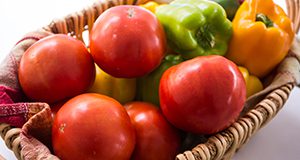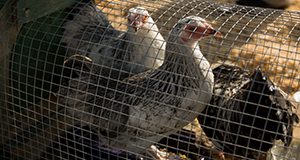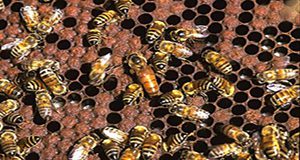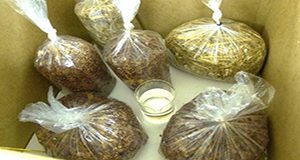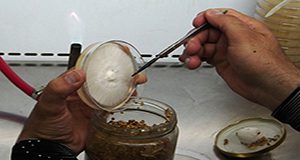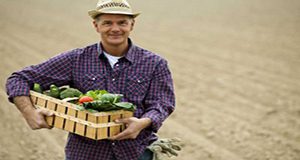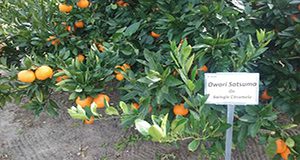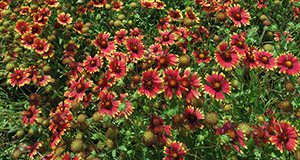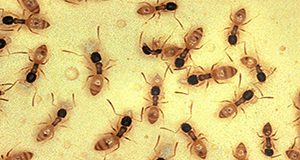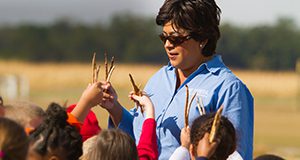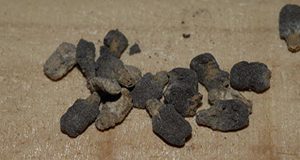Florida's K–12 schools provide a potential opportunity to increase market channel options for small- and mid-sized diversified farms, but processing, storage, and distribution resources are extremely limited for smaller producers. This 9-page document serves as a model and case study with steps for producers and other stakeholders to conduct a feasibility study before forming a cooperative to sell local fruits and vegetables to schools and other institutional food-service outlets. Written by Jonathan Adam Watson, Danielle D. Treadwell, Catherine Campbell, and Ray Bucklin, and published by the UF/IFAS Department of Agricultural and Biological Engineering, March 2021.
https://edis.ifas.ufl.edu/ae555
Category: Small Farms
Raising Backyard Chickens for Eggs
Raising backyard chickens is an increasingly popular way to explore self-sufficiency, connect with how our food is produced, and gain experience for future dabbling in food production. This 13-page publication is designed primarily for those considering raising backyard chickens for eggs for personal consumption. Written by Mary E. Henry, Jessica M. Ryals, Alicia Halbritter, and Derek L. Barber, and published by the UF/IFAS Department of Animal Sciences, revised November 2019.
http://edis.ifas.ufl.edu/an239
Using Nucs in Beekeeping Operations
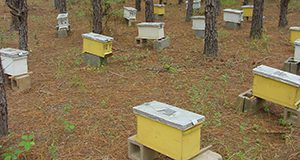
This 9-page illustrated fact sheet by James D. Ellis discusses the merits of using nucleus colonies, or nucs, which are smaller versions of full-sized Langstroth hives. The publication explains how to create and manage nucs and how to use them to control swarming, strengthen production colonies, re-queen hives, hive swarms, produce queens to sell to other beekeepers, and in general strengthen and expand a beekeeping operation. Published by the UF Department of Entomology and Nematology.
http://edis.ifas.ufl.edu/in869
Living with the African Honey Bee
African honey bees and European honey bees are the same species of honey bee, but the two are classified as different subspecies or races of honey bee. African honey bee x European honey bee hybrids present an unpredictable combination of both subspecies‹ behavioral traits. This 4-page fact sheet written by J. D. Ellis and M. Bammer and published by the UF/IFAS Department of Entomology and Nematology explains how to “bee-proof” your house and yard and develop a bee safety plan as well as what you can do if you encounter a swarm or a colony of bees and how to treat a bee sting.
edis.ifas.ufl.edu/in1205
D.I.Y. FunGuide: Grow Your Own Oyster Mushrooms at Home
Oyster mushrooms are commonly found on hardwoods throughout the north temperate zone; they are edible and have many nutritious qualities. This 5-page document describes how you can grow your own oyster mushrooms at home. Written by Chih-Ming Hsu, Khalid Hameed, Van T. Cotter, and Hui-Ling Liao and published by the UF/IFAS Department of Soil and Water Sciences, January 2018.
http://edis.ifas.ufl.edu/ss662
Isolation of Mother Cultures and Preparation of Spawn for Oyster Mushroom Cultivation
This 6-page publication details the cultivation of oyster mushrooms from mother culture isolation to spawn preparation. This protocol can be used by both homeowners and commercial cultivators. Written by Chih-Ming Hsu, Khalid Hameed, Van T. Cotter, and Hui-Ling Liao and published by the UF/IFAS Department of Soil and Water Sciences, January 2018.
http://edis.ifas.ufl.edu/ss663
The Food Safety Modernization Act of 2011-Final Rule for Preventive Controls for Human Food

This 7-page fact sheet is one in a series covering the different rules promulgated under the new Food Safety Modernization Act (FSMA), which was signed into law on January 4, 2011. It is intended to provide an overview of the final Preventive Controls for Human Food (PCHF) rule. Written by Jessica A. Lepper, Soohyoun Ahn, Keith R. Schneider, Michelle D. Danyluk, and Renee Goodrich-Schneider and published by the UF/IFAS Department of Food Science and Human Nutrition, January 2018.
http://edis.ifas.ufl.edu/fs301
Food Safety on the Farm: Good Agricultural Practices and Good Handling Practices-Sanitary Facilities
The Food Safety on the Farm series is a collection that reviews the generally recognized principles of GAPs (good agricultural practices) as they relate to produce, primarily at the farm level and with a particular focus on fresh Florida crops and practices. This publication focuses on GAPs and GHPs (good handling practices) relating specifically to sanitary facilities. Written by Jessica A. Lepper, Aswathy Sreedharan, Renee M. Goodrich-Schneider, and Keith R. Schneider and published by the UF/IFAS Food Science and Human Nutrition Department, January 2018.
http://edis.ifas.ufl.edu/fs159
Satsuma Mandarin Budget and Profitability Analysis for North Florida
This 16-page analysis written by Kevin R. Athearn, Peter C. Andersen, Bent V. Brodbeck, Lei Lani L. Davis, Clay Olson, Daniel K. Fenneman, Matthew Lollar, Derek Farnsworth, and Michael Perez and published by the UF/IFAS Food and Resource Economics Department provides research-based information and a description of satsuma mandarin markets, production costs, and potential returns for citrus growers who are considering establishing a satsuma grove in north Florida. Its purpose is to serve as a reference and model for growers to create their own enterprise budgets and make financial projections. An enterprise budget estimates revenues, costs, and net returns for a particular crop or farm enterprise to help growers assess the economic viability and risk of an enterprise, compare enterprises, and evaluate production or marketing changes. The budget and financial analysis may assist prospective and current satsuma growers, agricultural consultants, and lenders with planning and decision making.
http://edis.ifas.ufl.edu/fe1030
Food Safety on the Farm: Good Agricultural Practices and Good Handling Practices-Worker Health and Hygiene
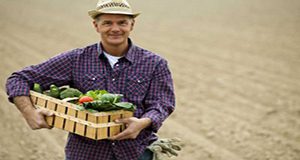
The ‘Food Safety on the Farm’ series is a collection that reviews the generally recognized principles of GAPs (good agricultural practices) as they relate to produce, primarily at the farm level and with particular focus on fresh Florida crops and practices. This 4-page publication focuses on GAPs and GHPs (good handling practices) relating specifically to worker health and hygiene. Written by Jessica A. Lepper, Keith R. Schneider, Renee M. Goodrich-Schneider, and Aswathy Sreedharan and published by the UF/IFAS Food Science and Human Nutrition Department, December 2017.
http://edis.ifas.ufl.edu/fs158
A Guide to Planting Wildflower Enhancements in Florida
The establishment of native wildflower plantings in Florida can benefit agricultural producers as well as native pollinators and other beneficial insects. Wildflowers provide forage and nesting sites for bees, butterflies, and other pollinators, increasing wild bee numbers across the farm, and increasing natural enemies of insect pests. This 6-page fact sheet written by Mary C. Bammer, Josh Campbell, Chase B. Kimmel, James D. Ellis, and Jaret Daniels and published by the UF/IFAS Department of Entomology and Nematology discusses choosing the right mix of native plant species to benefit many pollinator species, as well as proper site selection, planting practices, and weed control techniques. Wildflower plots are practical to manage, maximize benefits to wildlife, and fit well into overall agricultural operation management practices.
http://edis.ifas.ufl.edu/in1180
Ant Control in the Apiary
Ants are one of a beekeeper’s most common pests, both in the apiary and in the honey house. Florida and the southeastern United States have a large and diverse ant fauna, with both native and exotic species. The vast majority of ant species have no impact on our bees or us. This 8-page fact sheet written by William H. Kern and published by the UF/IFAS Department of Entomology and Nematology describes the few pest species can cause serious problems and suggests ways to control the ants for healthier hives.
http://edis.ifas.ufl.edu/in1181
Florida's Agritourism Laws
Agritourism combines tourism and agriculture, Florida’s two largest industries, to provide interactive, engaging, and educational experiences for the public. This four-page document describes the laws governing Florida agritourism operations. Written by Mary Beth Henry and Kathryn Stofer and published by UF’s Department of Agricultural Education and Communication, September 2017.
http://edis.ifas.ufl.edu/wc285
Keeping Bees in Florida
As of June 2016, there are over 4,000 registered beekeepers in the state of Florida and 440,000 managed colonies. According to the USDA, 2012 Florida beekeepers produced over 11 million pounds of honey. The average winter colony loss in Florida as reported by the Bee Informed Partnership Management Survey was the third lowest rate across the nation with only Hawaii and Texas reporting lower colony losses in that time period. This 4-page fact sheet written by Tomas A. Bustamante, Jamie D. Ellis, and Mary Bammer and published by the UF Department of Entomology and Nematology gives an overview of what makes Florida a unique state in which to keep honey bees. It explains the ins and outs of beekeeping in Florida, with descriptions of some of the hazards, a few of the important nectar-producing plants, special considerations for seasonal colony growth and management, and Florida beekeeping regulations.
http://edis.ifas.ufl.edu/aa264
Chalkbrood Recommendations
A pathogenic fungus called chalkbrood can turn infected larval honey bees into “mummies,” killing them and reducing their colony’s population and productivity. Florida’s subtropical climate may contribute to a greater incidence of the disease, which is common throughout the state. This 2-page fact sheet describing chalkbrood and listing some management strategies to control it was written by Malcolm T. Sanford, Cameron J. Jack, and Jamie Ellis, and published by the UF Department of Entomology and Nematology, December 2016.
http://edis.ifas.ufl.edu/aa138
Opinion Leadership and Local Food
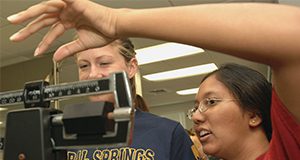
Three new articles have been published as part of a new series on Opinion Leadership and Local Food. These articles look at the role opinion leaders, or individuals who have a large amount of influence within their respective social circles, can have on motivating their peers to join in purchasing local food. The articles are as follows:
1. Opinion Leadership and the Perceived Health Benefits of Local Food (http://edis.ifas.ufl.edu/wc266)
2. Opinion Leadership and the Perceived Effects of Local Food on the Local Community (http://edis.ifas.ufl.edu/wc267)
3. Opinion Leadership and the Perceived Economic Benefits of Local Food (http://edis.ifas.ufl.edu/wc268)
Written by Layne S. Marshall, Melissa R. Taylor, and Alexa J. Lamm and published by the Department of Agricultural Education and Communication.
Identifying the Attitudes and Preferences of Parents and Children for Seafood: Summary of Focus Group Results
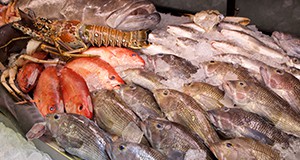
Seafood contains high-quality protein, vitamins, and minerals that have many health benefits, but the average family’s consumption of seafood in the United States remains below recommended levels. To begin to understand how to raise consumption levels, the study described in this three-page fact sheet focused on the influence parents’ seafood consumption habits may have on their children. Written by Anh Sam, Xiang Bi, and Lisa House and published by the Department of Food and Resource Economics.
http://edis.ifas.ufl.edu/fe992
How to Quantify Nosema Spores Infection Rate in a Honey Bee Colony
Nosema are single-celled fungal parasites that infect various animal hosts. One species, Nosema ceranae, has become the dominant microsporidian infection in western honey bee colonies. When honey bees ingest Nosema spores, many eventually starve to death because the spores replicate in the stomach and hijack the bee’s nutrition. The risk of Nosema infection can be particularly unsettling to beekeepers because colonies often do not show signs of infection until the colony is severely diminished.
This 5-page fact sheet written by Ashley N. Mortensen, Cameron J. Jack, Meghan McConnell, Liana Teigen, and Jamie Ellis and published by the Department of Entomology and Nematology explains how to diagnose and quantify Nosema infection in a honey bee colony.
http://edis.ifas.ufl.edu/in1123
Estimated Costs and Regional Economic Impacts of the Oriental Fruit Fly (Bactrocera dorsalis) Outbreak in Miami-Dade County, Florida
Oriental fruit flies, very destructive pests of fruits, were first detected in the Redland area of Miami-Dade County on August 26, 2015, and as of January 2016, 165 flies had been captured. This triggered an eradication program and establishment of a quarantine area composed of agricultural operations and nonagricultural properties, such as residential and commercial areas. As part of the effort to eradicate the fruit fly, growers and packers in the quarantine area are required to sign a compliance agreement that outlines the procedures necessary for harvesting, handling, and postharvest processing of agricultural products that may serve as hosts for any life cycle of the fruit fly. This 12-page fact sheet written by Sergio Alvarez, Edward A. Evans, and Alan W. Hodges and published by the UF Food and Resource Economics Department provides estimates of the direct and indirect losses to Florida’s agriculture and related sectors as a result of the outbreak and ensuing quarantine and eradication programs.
http://edis.ifas.ufl.edu/fe988
Ocho Pasos para Desarrollar un Plan Simple de Mercadeo

El mercadeo es parte esencial de un negocio. De hecho es el corazón de cualquier negocio que sirva la función vital de convertir actividades de producción en desempeño financiero, asegurando la supervivencia del negocio. El mercadeo es clave, sin importar el tipo de negocio (incluyendo la agricultura).
This 5-page fact sheet provides a rationale for developing a marketing plan, a step-by-step process for creating one, and a marketing plan worksheet. Written by Edward A. Evans and Fredy H. Ballen, and published by the UF Department of Food and Resource Economics. Translated into Spanish November 2015. (Photo credit: Thinkstock)
http://edis.ifas.ufl.edu/fe978
(also available in English as “Eight Steps to Developing a Simple Marketing Plan” at http://edis.ifas.ufl.edu/fe967)
